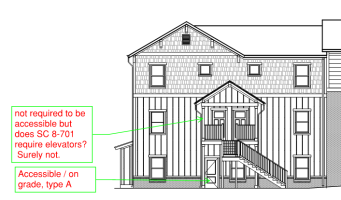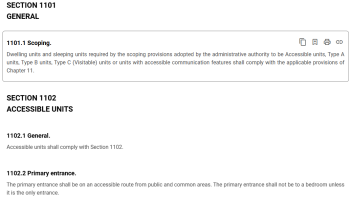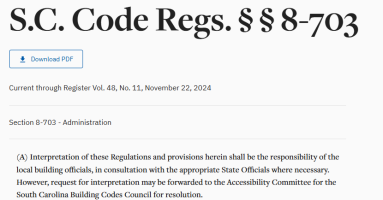Hi. I'm designing a development - apartments and other residential-type buildings. The state of South Carolina uses IBC 2018. It outlines that I must have at least 2% type A units and the remaining units type B (for grade-level dwelling units)- totally fine.
The issue is that the SC legislature / state code says it must be 5%. It also says, "with the exception of one and two family dwellings and other residential buildings to be offered for sale, every building or structure shall have all levels and areas made accessible to disabled persons in accordance with ICC A11.7.1"
That's further than ADA requirements. I'm not trying to skirt the code but more unravel the conflicts. If I have townhouses over flats - a typical scenario, the upper townhouses and the floors don't need accessible access to all floors.
Come on smart people! I've included clips of both code sections.
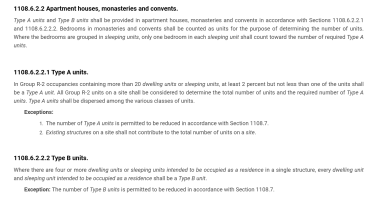
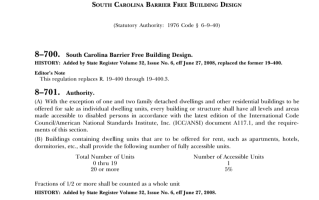
The issue is that the SC legislature / state code says it must be 5%. It also says, "with the exception of one and two family dwellings and other residential buildings to be offered for sale, every building or structure shall have all levels and areas made accessible to disabled persons in accordance with ICC A11.7.1"
That's further than ADA requirements. I'm not trying to skirt the code but more unravel the conflicts. If I have townhouses over flats - a typical scenario, the upper townhouses and the floors don't need accessible access to all floors.
Come on smart people! I've included clips of both code sections.



